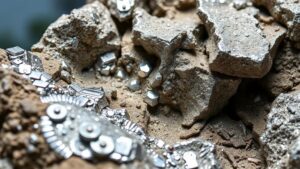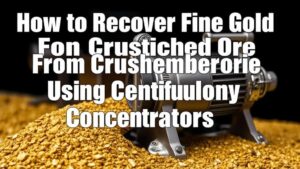Understanding Agricola’s Methods for Separating Metals in Alloys
Understanding Agricola’s Methods for Separating Metals in Alloys
Georgius Agricola, a prominent figure in the field of mining and metallurgy during the 16th century, made significant contributions to the understanding of metal separation techniques. His work laid the foundation for modern metallurgy, providing detailed descriptions of processes used to extract metals from their ores and separate them from one another. This article examines Agricolas methods, exploring their historical context, techniques employed, and lasting impact on metallurgy.
Historical Context of Agricola’s Work
Agricolas seminal work, De re metallica, published in 1556, is considered a cornerstone text in the study of metallurgy. At a time when the scientific method was emerging, Agricola systematically documented practices based on observation and practical experience. His insights into the properties of metals and the behaviors of different materials in various conditions reflect an early understanding of materials science.
Primary Methods of Metal Separation
Agricola detailed several methods for separating metals from their alloys. These methods included:
- Crucible Melting: This method involves heating metal alloys in a crucible until they reach their melting point. Different metals have varying melting temperatures, allowing for the separation of metals as they solidify at different rates. Agricola described how to utilize this technique effectively to obtain pure metals.
- Dissolution and Precipitation: Agricola emphasized the use of chemical processes to separate metals. By dissolving the alloy in suitable acids and subsequently precipitating the desired metal, he provided a systematic approach to separation.
- Matting: In this method, Agricola noted how certain metals oxidize, allowing for the separation of less noble metals from more noble ones. By heating the alloy in the presence of a flux, the more noble metals can be extracted as they refuse to bond with the slag.
Detailed Examples of Techniques
One practical application of Agricolas methods is found in the extraction of silver from lead ores. Agricola described how to convert lead-silver alloys into pure silver using a combination of cupellation–a process of melting lead with a flux that absorbs impurities–and subsequently refining the silver through reduction in an appropriate atmosphere. This method laid the groundwork for later developments in metallurgy, particularly in regions rich in silver deposits, such as the mines of Bohemia and the Americas.
Also, Agricola documented the separation of mercury from silver. By applying heat to a mixture, he noted that mercury, being volatile, evaporates, while silver remains. This understanding paved the way for more standardized methods in dealing with amalgamation and separation processes essential to mining operations.
Impact on Modern Metallurgy
Agricola’s techniques not only influenced contemporary metallurgical practices but also informed future generations of scientists and engineers. His rigorous approach to documenting processes, akin to modern scientific publication, heralded a transition toward empirical methods in metallurgy. principles outlined in Agricolas work continue to underpin various modern techniques for metal separation, such as electrolytic refining and pyrometallurgical processes.
Conclusion and Takeaways
Georgius Agricolas methods for separating metals in alloys represent a pivotal moment in the history of metallurgy. His combination of practical techniques and observational science significantly advanced the understanding of how metals can be manipulated for various applications. Key takeaways from Agricolas work include:
- The importance of empirical methods in scientific practice.
- The application of thermal and chemical processes for the separation of metals.
- The recognition of the varying properties of metals that allow for systematic extraction and refinement.
Overall, Agricola’s contributions remain relevant, and an appreciation for his methods offers valuable insights into both historical and contemporary metallurgical practices.



